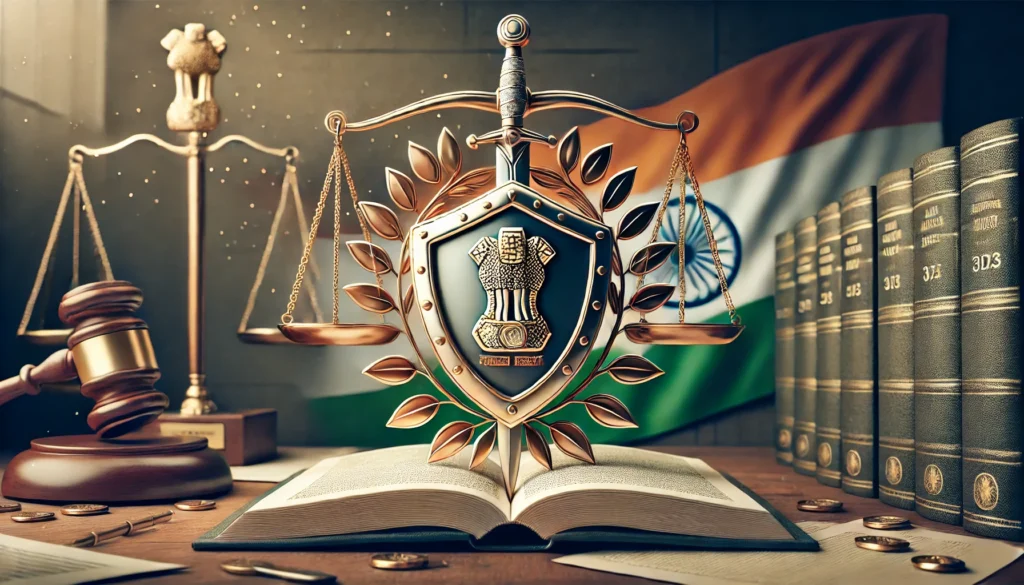Published On: 28th November, 2023
Hasmukh S/O Bhagwanji M. Patel vs The State of Gujarat & Ors on 4 August 1980
EQUIVALENT CITATIONS: 1981 AIR 28, 1981 SCR (1) 353
BENCH: Sarkaria, Ranjit Singh
PETITIONER:
HASMUKH S/O BHAGWANJI M. PATEL
RESPONDENT:
THE STATE OF GUJARAT & ORS.
DATE OF JUDGMENT: 04/08/1980
CITATION:
1981 AIR 28 1981 SCR (1) 353
1981 SCC (2) 175
CITATOR INFO:
RF 1982 SC1500 (12)
R 1986 SC 687 (73)
PARTIES INVOLVED:
- The petitioner: Hansmukh, the brother of Lallu Jogi Patel, who was detained under the COFEPOSA for his alleged involvement in smuggling activities.
- The respondents: The State of Gujarat and its Home Department, represented by the Deputy Secretary, Shri P.M. Shah, who issued the detention order against the detenu1. The Union of India and its Ministry of Finance, represented by the Collector of Customs, Rajkot, supplied the material on which the order of detention was based.
- The detenu: Lallu Jogi Patel, who was accused of smuggling wrist-watches and silver out of the country to Dubai, in conspiracy with one Umar Bakshi.
- The Supreme Court of India: The bench comprising of Justice R.S. Pathak and Justice S. Sarkaria, who heard the petition for a writ of habeas corpus and dismissed it, upholding the validity of the detention order.
- The case was a petition under Article 32 of the Constitution for the issuance of a writ of habeas corpus by the brother of Hansmukh, who was detained under the Conservation of Foreign Exchange and Prevention of Smuggling Activities Act, 1974 (COFEPOSA).
- The detention order was issued by the Deputy Secretary to the Government of Gujarat, Home Department, on January 30, 1980, and served on Hansmukh on January 31, 1980.
- The grounds of detention were very elaborate and detailed, and they also contained the history of Hansmukh’s previous detention under the Maintenance of Internal Security Act (MISA) and his release on March 21, 1977.
- The grounds of detention alleged that Hansmukh was involved in smuggling activities, such as smuggling wrist-watches and silver out of the country to Dubai, in conspiracy with one Umar Bakshi.
- The Supreme Court of India dismissed the petition. It upheld the validity of the detention order, finding that the grounds of detention were not vague, irrelevant, or extraneous, but rather specific and detailed.
- The Supreme Court also found that the grounds of detention were served on Hansmukh in time and a language understood by him, that the detaining authority had applied its mind to the material before it, and that there was no evidence of any non-application or malafide exercise of power.
- The Supreme Court further found that the advisory board had considered the representation of Hansmukh and that the procedure followed by the board was fair and reasonable.
- The Supreme Court concluded that the detention order was valid and that there was no violation of the constitutional or statutory rights of Hansmukh.
ARGUMENT FROM THE PETITIONER’S SIDE:
- There was an impermissible delay in furnishing copies of the documents and statements relied upon in the grounds of detention. The petitioner claimed that this violated the right of the detenu to make an effective representation against his detention as guaranteed by Article 22(5) of the Constitution.
- The reasons for the imprisonment were ambiguous, superfluous, and irrelevant. The petitioner contended that the grounds of detention did not disclose any nexus between the alleged activities of the detenu and the maintenance of public order or the conservation of foreign exchange. The petitioner also argued that the grounds for detention were based on stale and unreliable material.
- The detaining authority did not apply its mind to the material before it and acted mechanically and casually. The petitioner alleged that the detaining authority did not consider the relevant circumstances and the antecedents of the detenu and did not record its satisfaction in a proper and bona fide
- The advisory board did not consider the representation of the detenu and did not follow the procedure prescribed by law. The petitioner asserted that the advisory board did not give a personal hearing to the detenu and did not examine the material placed before it. The petitioner also claimed that the advisory board did not give any reasons for its opinion and did not communicate its decision to the detenu.
ARGUMENT FROM THE RESPONDENT’S SIDE:
- There was no unreasonable delay in furnishing copies of the documents and statements relied upon in the grounds of detention. The respondent contended that the copies were supplied to the detenu as soon as they were received from the Collector of Customs and that the delay was not deliberate or intentional.
- The grounds of detention were not vague, irrelevant, or extraneous, but rather specific and detailed. The respondent maintained that the grounds of detention disclosed a clear nexus between the alleged activities of the detenu and the maintenance of public order and the conservation of foreign exchange. The respondent also argued that the grounds for detention were based on fresh and reliable material.
- The detaining authority did apply its mind to the material before it and acted in a proper and bona fide manner. The respondent asserted that the detaining authority did consider the relevant circumstances and the antecedents of the detenu and recorded its satisfaction in a clear and cogent manner.
- The advisory board did consider the representation of the detenu and followed the procedure prescribed by law. The respondent affirmed that the advisory board did give a personal hearing to the detenu and examined the material placed before The respondent also claimed that the advisory board did give reasons for its opinion and communicated its decision to the detenu.
ISSUED FACED:
Hansmukh vs State of Gujarat and Ors. on 4 August 1980. The “issued face” is usually used in the context of bonds, which are debt securities that pay a fixed amount of interest to the investors. The issued face is the amount of money that the bond issuer promises to pay back to the bondholder at the maturity date of the bond. The issued face is also known as the face value, the par value, or the principal value of the bond.
The case of Hansmukh vs State of Gujarat and Ors. was a petition under Article 32 of the Constitution for the issuance of a writ of habeas corpus by the brother of Lallu Jogi Patel, who was detained under the Conservation of Foreign Exchange and Prevention of Smuggling Activities Act, 1974.
JUDGEMENT AND ITS ANALYSIS:
- The judgment was delivered by Justice Sarkaria of the Supreme Court of India, who dismissed the petition for a writ of habeas corpus filed by the brother of Lallu Jogi Patel, who was detained under the COFEPOSA for his alleged involvement in smuggling activities.
- The judgment upheld the validity of the detention order issued by the Deputy Secretary to the Government of Gujarat, Home Department, on January 30, 1980, and served on the detenu on January 31, 1980, along with the grounds of detention.
- The judgment examined the grounds of detention, which were very elaborate and detailed, and contained the history of the detenu’s previous detention under the MISA and his release on March 21, 1971.
- The judgment found that the grounds of detention were not vague, irrelevant, or extraneous, but rather specific and detailed, and disclosed a clear nexus between the alleged activities of the detenu and the maintenance of public order and the conservation of foreign exchange.
- The judgment also found that the grounds of detention were served on the detenu in time and a language understood by him, that the detaining authority had applied its mind to the material before it, and that there was no evidence of any non-application or malafide exercise of power.
- The judgment further found that the advisory board had considered the representation of the detenu and that the procedure followed by the board was fair and reasonable.
- The judgment concluded that the detention order was valid and that there was no violation of the constitutional or statutory rights of the detenu. The analysis of the judgment can be done from various perspectives, such as legal, constitutional, human rights, etc. Here, I will attempt to provide a brief analysis from a legal perspective, based on the principles of natural justice and the rule of law.
- The judgment can be seen as a strict interpretation of the COFEPOSA, which is a preventive detention law that allows the executive to detain a person without trial for up to one year if it is satisfied that such detention is necessary to prevent him from acting in any manner prejudicial to the conservation or augmentation of foreign exchange or the prevention of smuggling activities.
- The judgment can also be seen as a deference to the executive’s discretion and satisfaction in matters of preventive detention, as long as the procedural safeguards and the substantive requirements of the law are complied with.
- The judgment can also be seen as a recognition of the need to balance the individual liberty of the citizen with the national security and economic interests of the state, especially in the context of the rampant smuggling and foreign exchange violations that were prevalent at that time.
- The judgment can also be seen as a reaffirmation of the constitutional validity of the COFEPOSA, which was upheld by the Supreme Court in earlier cases, such as Haradhan Saha vs State of West Bengal and Ors. (1975) 3 SCC 198 and Attorney General for India vs Amratlal Prajivandas and (1994) 5 SCC 545.
- The judgment can also be seen as a reflection of the judicial philosophy of Justice Sarkaria, who was known for his conservative and pro-government approach in matters of constitutional law and civil liberties.
CONCLUSION:
The conclusion of the case of Hansmukh vs State of Gujarat and Ors. on 4 August 1980 is that the Supreme Court of India dismissed the petition for a writ of habeas corpus filed by the brother of Lallu Jogi Patel, who was detained under the COFEPOSA for his alleged involvement in smuggling activities. The Court upheld the validity of the detention order issued by the Deputy Secretary to the Government of Gujarat, Home Department, and found that the grounds of detention were not vague, irrelevant, or extraneous, but rather specific and detailed. The Court also found that the grounds of detention were served on the detenu in time and a language understood by him, that the detaining authority had applied its mind to the material before it, and that there was no evidence of any non-application or malafide exercise of power. The Court further found that the advisory board had considered the representation of the detenu and that the procedure followed by the board was fair and reasonable. The Court concluded that the detention order was valid and that there was no violation of the constitutional or statutory rights of the detenu.
The conclusion of the case can be seen from various perspectives, such as legal, constitutional, human rights, etc. From a legal perspective, the conclusion can be seen as a strict interpretation of the COFEPOSA, which is a preventive detention law that allows the executive to detain a person without trial for up to one year, if it is satisfied that such detention is necessary to prevent him from acting in any manner prejudicial to the conservation or augmentation of foreign exchange or the prevention of smuggling activities. The conclusion can also be seen as a deference to the executive’s discretion and satisfaction in matters of preventive detention, as long as the procedural safeguards and the substantive requirements of the law are complied with. The conclusion can also be seen as a recognition of the need to balance the individual liberty of the citizen with the national security and economic interests of the state, especially in the context of the rampant smuggling and foreign exchange violations that were prevalent at that time. The conclusion can also be seen as a reaffirmation of the constitutional validity of the COFEPOSA, which was upheld by the Supreme Court in earlier cases, such as Haradhan Saha vs State of West Bengal and Ors. (1975) 3 SCC 198 and Attorney General for India vs Amratlal Prajivandas and Ors. (1994) 5 SCC 54. The conclusion can also be seen as a reflection of the judicial philosophy of Justice Sarkaria, who was known for his conservative and pro-government approach in matters of constitutional law and civil liberties.





Impressive analysis! Your comprehensive examination of the case from legal, constitutional, and human rights perspectives provides a well-rounded understanding. The clarity in presenting the conclusion, highlighting the balance between individual liberty and national interests, adds depth to the narrative. The incorporation of relevant Supreme Court precedents and insight into Justice Sarkaria’s judicial philosophy enhances the overall richness of the article. Well done!